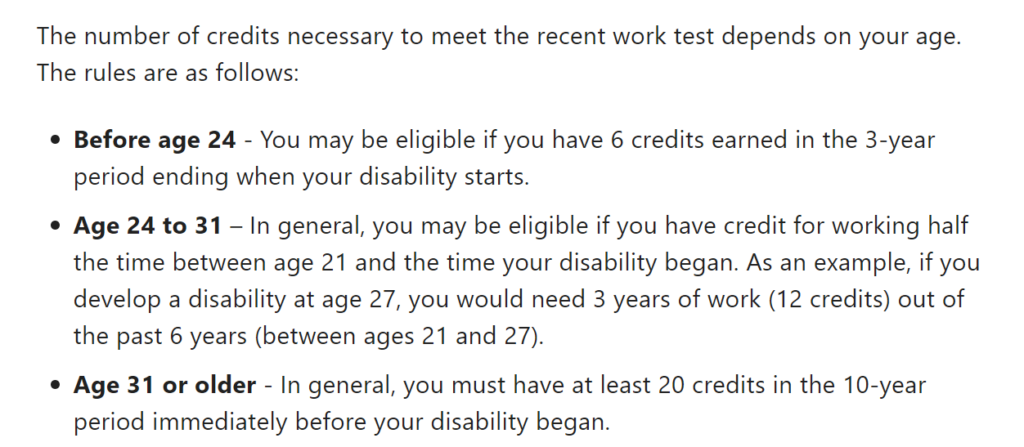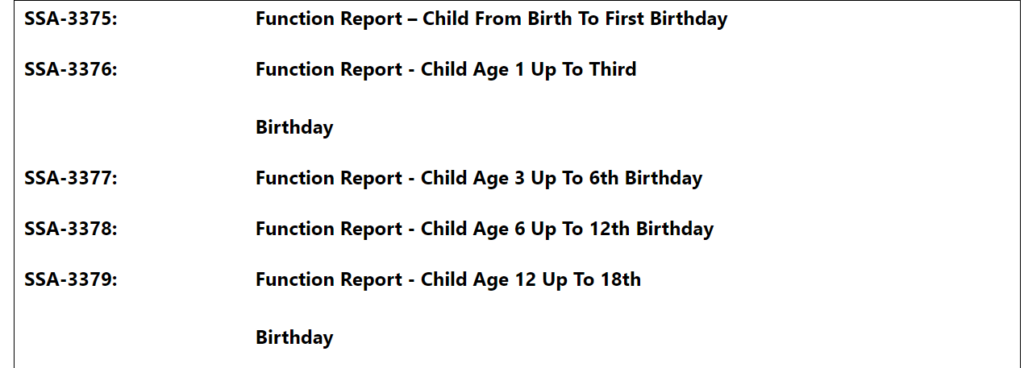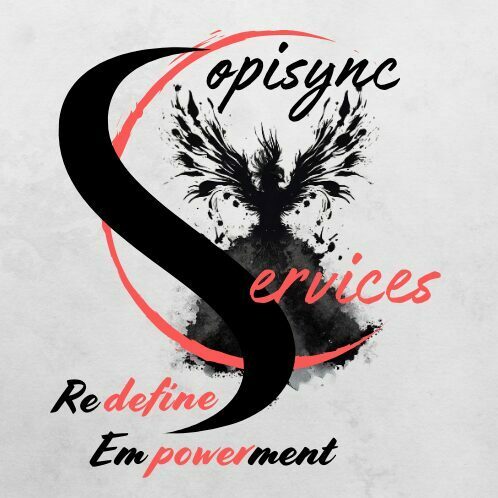
Believe it or not, the application process for social security is not over complicated. That’s right, I said it! It really is not and the reason being is because it is systematic; try to remove the anxiety a moment and envision all the various programs and ask yourself what makes sense – nothing with order or a defined set of steps?
One of the most fundamental needs in any task you take on is knowing the rules of the game and aggressive compliance, and we can laugh at that statement but it’s absolutely critical because the complications come generally due to non-compliance, on your end or their end.
My name was known in the local office for a reason and it’s because I could draw the right cards. I’m going to give you these cards, as well as a number of other needs with preparation and hopefully, you’ll come to the results you need to move forward.
Let’s begin!
Preparing the Data for Your Social Security Application
The first step, SSI or SSDI, is collecting your data – get a notebook out or open a blank word document, whatever your preferred medium, and write down every location you’ve been seen at. Save and store this information once completed as you’ll be reviewing it multiple times.
You will need the location’s address, phone number, time frames and relevant data on why you were seen/procedures you can recall, etc.
You don’t need a specific date, but at least a general time frame to assist with locating the information; the Social Security Administration will use this information to request records and the details will be in those data sets.
You don’t need to detail every visit, only general. For example, if I received therapy at Bob’s Therapy in 2022, I would put that, as well as who I am currently seeing if I left that location. Try to order it by the earliest leading to your current – you are creating a history of your disability, essentially, and providing this information so records can be pulled and verified.
Include emergency room visits with the hospital information if you were seen and it is relevant to the disability you are applying for, as well as any social services utilized relevant to your disability.
Also to include is a list of all current medications and who they are prescribed by and why, as you will be asked for this information. Knowing previous medications and why you stopped them is relevant; if you can remember them and list them – do.
They’ll also ask for your work history for the past fifteen years before you became disabled and unable to work – try to obtain as much information as possible, as it will ask time frames and your role, as well as pay information.
Once you have your data compiled, you’re ready for the next steps.
What to Apply for
If you are an adult with enough work credits, you should focus on SSDI on being reviewed first – SSA automatically will review for both with adults, at least it has, but it doesn’t hurt to confirm.
To check your work credits, you can login or create an account on the SSA Website at:
Generally, you need 40 credits, with 20 being earned in the last ten years ending with the year your disability began. Younger workers may qualify with less; I will post a data set with general guidelines to review, but first let me explain why SSDI is more favorable.
You will get more monthly, qualify for programs with returning to work or attempting to (Trial Work Period), and you have a higher income limit without benefits being affected. Ideally, if you can get SSDI, you want this over SSI.

If you feel you qualify and the data matches, review with SSA if you get a denial for SSDI to confirm on their statements with why you were not approved for review. Trust me when I say that staff do not know their own program, once literally sending a statement from the SSA handbook stating my client was correct and they still fought it, having to escalate to the Office of Inspector General.
SSI, on the other hand, is based on income. If you don’t have enough work credits, you can attempt to get SSI to assist with financial needs due to your disability causing barriers with a sustainable income, or Substantial Gainful Activity (SGA). What is considered sustainable changes year to year; 2024 is currently set at $1,550 for non-blind individuals and $2,590 for statutorily blind individuals.
You will have a financial assessment completed as part of your application; understand that your assets count! I’m not saying that if you have two vehicles, to put one in someone else’s name that you trust but I am saying if you have two vehicles, you’ll likely not qualify.
They will want financial statements from all accounts which means checking and savings accounts that go back a few months. There are exceptions to what is considered countable income, such as loans or income tax received. If you can explain income in accounts due to loans or income tax, prepare to have that loan or income tax information available to send.
You can find more exceptions here: https://www.ssa.gov/ssi/text-income-ussi.htm
Now, if you are preparing to begin an application for a child, you’ll follow the same needs and preparation for SSI. Luckily, the SSA website updated their landing page which allows you to select between what you will be applying for and is generally straight forward.
If an online application is daunting or you’re unable to login or having issues whatsoever, you can contact your local SSA office and request an interview on the phone. Find your local office here:
Generally, you’ll complete a phone review of information and the financial review either way, which is why you want to keep your data set handy for recall, as well as for future requests for information. It’ll make the process much faster and straightforward.
After the Application
Once the main application is completed and you pass the financial review, you’ll go into the next phase where your records will be pulled and assessed. This can last anywhere from five to seven months, generally.
During this time, you’ll get packets in the mail to complete.
For adults, you’ll receive an Adult Function Report (SSA 3373) and a third party function report (SSA 3380) for someone who knows you and how your disability affects you.
For children, you’ll receive a function report determined by the age of the child:

You will likely also be scheduled to see one of their physicians in their office; I’ve had cases where a client didn’t, but the large percentage do.
These forms are crucial for your case! Delve and do so deeply! I understand it is difficult to see from the perspective of someone in the field of mental health; we have the terminology and an understanding, or should. I’ve dealt with an actual SSI advocate whose appeal was “Because I am disabled,” so not everyone is a winner, yea? Never trust a title!
If you don’t have support to assist you with review, or you do and they are braindead, you’re still okay! You just want to be as detailed as possible.
That means if you don’t drive and have issues with riding a bus, explain the anxiety or disability. If cooking is difficult because of mental or physical barriers, state this. Every question should angle back to the disability and how that affects your ability to work so ask yourself with every question on why this is a contributing factor to your ability to work. If something is truly irrelevant then that’s fine, don’t fabricate, but there are often things there you’re not thinking about that actually do factor in. Try to find them.
The third-party form should be just as consistent with your own statements.
Same with the children’s report, anything that causes barriers is a barrier so communicate that to the fullest extent possible.
Contributing Factors
This is your general framework, but there are extra steps to assure a more seamless and successful outcome, and these are your cards.
1. Never drop items off in the SSA office drop box!
Never ever! Look, I’m telling you – you have a fifty-fifty chance they’ll receive (I.E lose) documentation, and you have nothing to prove you actually completed this step. You have deadlines and your application will be denied due to paperwork not being returned – a large percentage of denials have nothing to do with the disability in question, but a paper that wasn’t received.
I don’t care if it’s extra work; do it.
Take the paperwork into the office, get a ticket, and give it to a worker and have a copy of your own to keep so that the worker can sign stating the date and time you provided the forms.
Or…
Fax the documentation and save the timestamped statement stating the date and time the paperwork was faxed.
You can mail items, but if you do – track it with a tracking number and save your receipt!
Your card is always going to be able to prove you turned in the requested information, thereby forcing fault on the office which is reportable both due to HIPPA violations they want to avoid and the Office of Inspector General for service waste. You can therefore escalate if they don’t own their error and there are constant errors.
Know this, if you can’t prove it – you never did it.
2. Follow Up
Anytime something is returned, call your local office, and speak with staff to confirm the items were received.
Keep a notebook handy to write down responses/statements. If they state they are putting a note in for your caseworker to call you to confirm, write that down and when you don’t hear from that caseworker (there is so much waste) in say, three days, call the local office and complain.
Write this down, too. Maybe you’ll get confirmation, but if not and still no updates – call the toll-free number which documents calls in and escalates needs. You’ll provide all the information about your attempts to reach out and inability to obtain feedback or confirmations, which helps when they send you documentation stating you didn’t return items you did, etc.
Think of it as building a case and covering your end of the needs.
At least once a month, reach out to the local office or toll-free number and review any needs with your case. It may feel redundant and unnecessary, but sometimes you’ll get a statement on something needed and a request sent despite not actually getting it.
3. Review with your current providers.
Let your current providers know you are applying for disability benefits and review if they require a separate Release of Information (ROI).
We have a local mental health office who refuses the signed release you provide SSA to pull your records and require one completed by you on their end.
Without a release, they can’t pull the records, and this will affect your outcome, so it is best to check in and find out before a denial comes to tell you so.
4. Update SSA on any new information.
If you receive any new diagnosis, treatments, testing, medications, etc., request this information be faxed to the local office or whatever field office is currently handling your case.
Again, follow up on information being received or turn it in yourself.
5. Consider your current treatment.
If you are applying, for example, for mental health disability – understand the data should be consistent with attempts and how they failed or are requiring more support.
If you have a mental health disability and are not receiving any treatment, then there is no data to support your statement, or any issues being shown as to how it is affecting your life.
If you have no data, you should apply and mark that date as the time the disability began then begin funneling treatment; you’ll likely be denied at first, but at least it can track the beginning and after more is collected to support that statement, help with possible successful outcomes in the future.
SSI is for low-income individuals/families, likely already being qualified for Medicaid which offers a lot of mental health programs. Think case management, Office of Vocational Rehabilitation programs, Therapy, Psychiatry, specific diagnostic testing, etc.
Same with children, your child should have an IEP or 504 plan, therapy, case management, etc.
For physical health, you can visit other providers on your insurance plan who may dig deeper into your disability and attempt different testing or refer you to specialists. Just having a doctor’s office is not going to be enough unless the disability is extremely explicit.
Think of it as you are proving yourself as failing, as weird as that sounds. The more you can show this in data, the more it becomes apparent on why you need disability.
Denials
Whenever you get a denial, you’ll receive information on why you were denied; review it and confirm all data was obtained as needed.
Make sure you appeal in the expected timeframe so your case can go into reconsideration.
I had a case where a mother experienced extremely racial comments with a physician at their medical review – we utilized even this as part of the appeal, feeling there were barriers here with bias and potential retaliation when mom wasn’t having it.
Really, most outcomes come down to the person reviewing or the judge if it escalates to this factor; there is no guarantee.
I would suggest always opting for meeting with the judge via virtual or in person meeting, this allows a lot to be conveyed beyond reports and writing.
But, again, also be realistic in what data is available to review and how the lack of it affects realistic outcomes.
The goal is to not be denied due to other factors, which at least is something you can control, so focus your tasks on obtaining a decision that is based on actual disability data and not missing documentation.
Additional Resources
If in an appeal, you can find SSI/SSDI attorneys that will work with you without upfront payment, having specific caps in a percentage only if your case wins an appeal.
You can call your local office for information on programs, advocates and registered attorneys that are registered to work as an SSI/SSDI support. You can also do a google search for SSI/SSDI attorneys and reach out to review.
Again, these services are at no cost unless you win the appeal, but it is also their discretion to take your case on.
Private attorneys will charge costs, so make sure you are reaching out to the appropriate locations.
You can also find assistance elsewhere with advocates and supports:
https://soarworks.samhsa.gov/article/looking-for-help-with-your-ssissdi-application
Reach out to your local assistance office which can provide supports, as well:
https://www.usa.gov/state-social-services
There is a lot of information and resources online, as well as people who will charge you to complete the application with you.
I had a family that paid over $600 dollars for help, which is insane to me, given the application itself is fairly straightforward – remember, you can do a phone application and most important is the data and history that you already know.
If you receive case management services or are involved with other social services, you may find additional support with these services, as well as state programs for specific groups such as your state department with the Office of Aging or outside agencies like NAMI.
For the most part, know your cards and focus on obtaining a denial or approval based on real data and avoid miscellaneous barriers that cloud those results. If you can track and follow up, you can win half that battle and identify real issues if you obtain a denial.
I have had some high detail cases denied initially, so don’t think a denial necessarily means you should give up – I am amazed how some cases are denied, trust me when I say appeal and possibly grab yourself an SSI/SSDI attorney to assist.
But if you are denied and realistically aren’t in any treatment, you may need to build a better case by incorporating more services that can build it. Almost every service has treatment planning, assessments with risks and needs, etc. which assist in that data need and confirm those barriers spoken so utilize them via referral requests and specialists to work with you.
I hope this piece helps give you some sentiment of understanding and ease the anxiety; you can succeed here, you just have to hold yourself as accountable as you hold services accountable – be diligent and know your cards.
